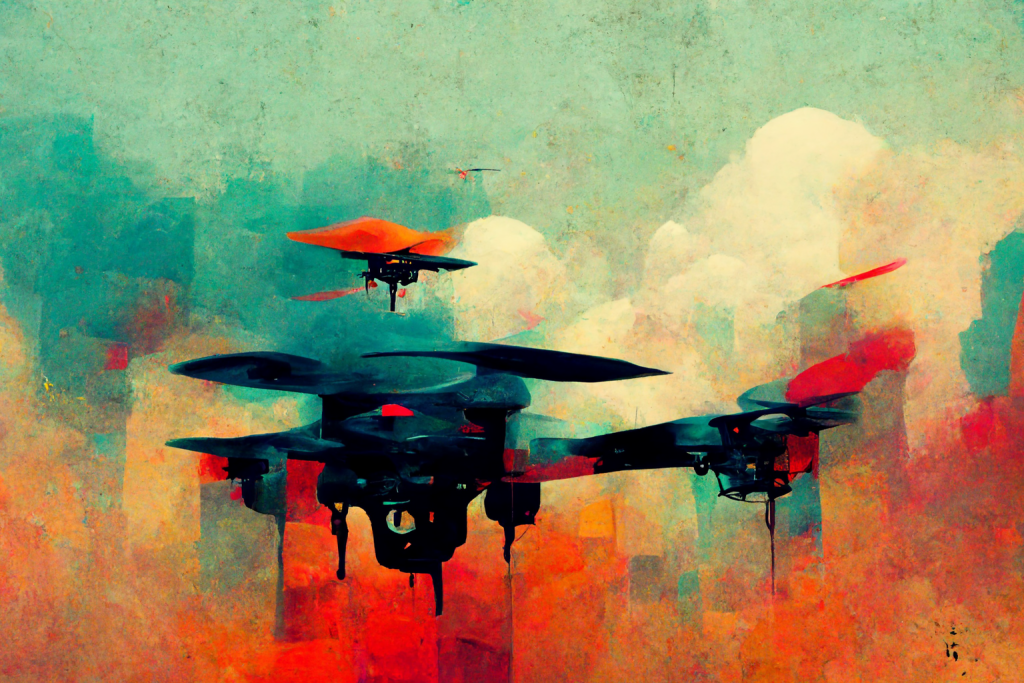A LeadBelt Gaming Guide Series
Its Impact on the Sport:
Technology has played a significant role in the growth of drone racing. In this article, we’ll take a closer look at the role of technology in drone racing, the impact it has had on the sport, and some of the latest technological advancements in the field.

Drone racing has quickly become one of the most exciting and high-tech sports in the world, attracting a growing number of enthusiasts and professional pilots. With its combination of speed, precision, and strategy, drone racing requires a unique blend of skills and technology, making it a truly modern and cutting-edge sport.
In this article, we’ll delve into the role of technology in drone racing and explore how it has impacted the sport over the years. We’ll also discuss some of the latest technological advancements in the field and their potential impact on the future of drone racing.
First, let’s take a look at the early days of drone racing and how technology helped shape the sport into what it is today.
The Early Days of Drone Racing
Drone racing can trace its roots back to the early days of radio-controlled aircraft. In the 1970s and 1980s, remote-controlled aeroplanes and helicopters became popular hobbies, and enthusiasts began to organize races and competitions.
However, it wasn’t until the advent of affordable and reliable quadcopter drones in the early 2010s that drone racing really took off. Thanks to the rapid development of drone technology, hobbyists could now build and fly their own high-performance racing drones, equipped with powerful motors, advanced flight controllers, and first-person-view (FPV) camera systems.
The Role of Technology in Drone Racing
Today, technology plays a critical role in every aspect of drone racing, from designing and building racing drones to controlling and navigating them through complex courses. Here are some of the key technological advancements that have shaped the sport over the years:
- Racing Drone Components: Racing drones require a range of specialized components, including high-speed motors, responsive flight controllers, and lightweight, durable frames. These components must work seamlessly together to provide the speed, agility, and control needed to navigate through challenging race courses.
- First-Person View (FPV) Systems: FPV cameras and video transmitters allow pilots to see what their drone sees in real-time, providing a thrilling and immersive racing experience. FPV goggles or screens provide the pilot with a live video feed, giving them a first-person view of the race course.
- Advanced Flight Controllers: Advanced flight controllers provide precise control over a racing drone’s movements, allowing pilots to make quick adjustments and navigate through challenging courses with ease. Many racing drones use custom-built flight controllers with specialized firmware and tuning settings to optimize performance.
- Race Timing and Scoring Systems: Accurate timing and scoring systems are essential for drone racing competitions. These systems use infrared sensors and specialized software to track and record each drone’s time and position during the race, allowing judges and spectators to follow the action and determine the winner.
- Drone Racing Simulators: Drone racing simulators allow pilots to practice and hone their skills in a virtual environment, without risking damage to their real-life racing drones. These simulators use advanced physics engines and realistic graphics to provide a true-to-life racing experience.

The Impact of Technology on Drone Racing
The rapid development of drone technology has had a significant impact on the sport of drone racing. Here are just a few of the ways technology has shaped the sport over the years:
- Increased Speed and Agility: Thanks to advancements in motor technology, racing drones can now reach incredible speeds and manoeuvre through challenging courses with ease.
- Improved Safety and Reliability: Advanced flight controllers and other safety features have made racing drones safer and more reliable than ever before, reducing the risk of accidents and crashes.
- Enhanced Spectator Experience: First-person-view cameras and video systems allow spectators to experience the thrill of drone racing up close, providing a more immersive and engaging viewing experience.
- More Accessible to Hobbyists: The availability of affordable and easy-to-use drone components has made drone racing more accessible to hobbies
Another major technology that has contributed to the growth of drone racing is the introduction of digital FPV systems. Traditional analogue FPV systems were limited by poor video quality and signal interference, which could make it difficult for pilots to navigate through complex courses. However, with the introduction of digital FPV systems, pilots now have access to high-definition video with minimal latency and almost no signal interference.
One of the most popular digital FPV systems used in drone racing is the DJI Digital FPV System. This system includes a high-definition camera and transmitter, as well as a set of digital goggles that allow pilots to see exactly what their drone sees in real-time. The DJI Digital FPV System has revolutionized the way drone racing is done, allowing pilots to navigate through complex courses with ease and providing viewers with an immersive and exciting experience.
In addition to hardware advancements, software has also played a major role in the growth of drone racing. One such software is the Betaflight firmware, which is used to control and tune racing drones. Betaflight is an open-source firmware that can be customized to suit the needs of individual pilots, allowing them to optimize their drones for speed, agility, and performance.
Overall, technology has had a significant impact on the sport of drone racing. From advancements in drone design to improvements in video transmission, technology has made it easier for pilots to fly and race their drones, while also providing viewers with an exciting and immersive experience. As technology continues to evolve, we can expect to see even more advancements in the field of drone racing, further pushing the boundaries of what is possible.
Comments are closed